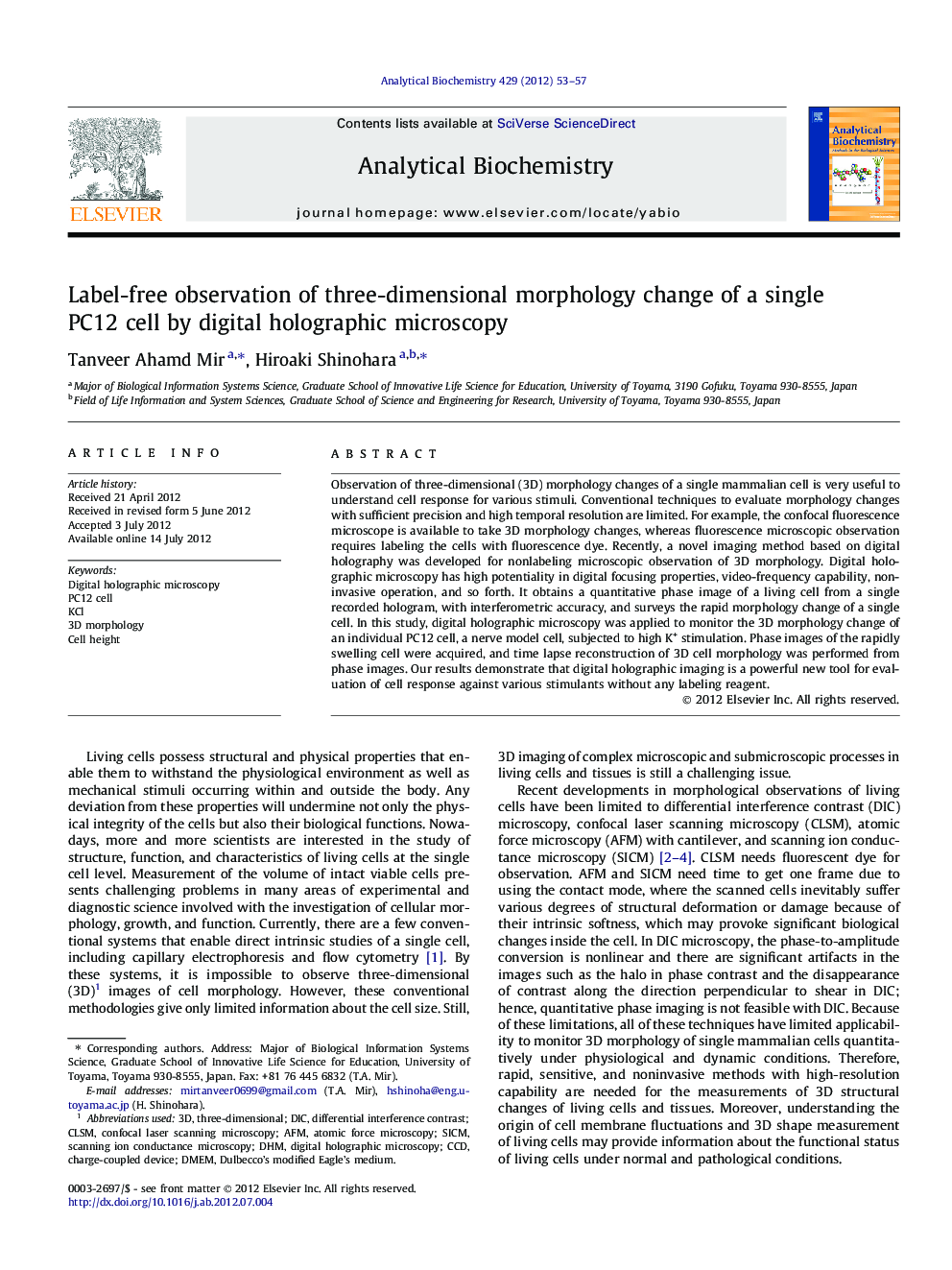| Article ID | Journal | Published Year | Pages | File Type |
|---|---|---|---|---|
| 1173097 | Analytical Biochemistry | 2012 | 5 Pages |
Observation of three-dimensional (3D) morphology changes of a single mammalian cell is very useful to understand cell response for various stimuli. Conventional techniques to evaluate morphology changes with sufficient precision and high temporal resolution are limited. For example, the confocal fluorescence microscope is available to take 3D morphology changes, whereas fluorescence microscopic observation requires labeling the cells with fluorescence dye. Recently, a novel imaging method based on digital holography was developed for nonlabeling microscopic observation of 3D morphology. Digital holographic microscopy has high potentiality in digital focusing properties, video-frequency capability, noninvasive operation, and so forth. It obtains a quantitative phase image of a living cell from a single recorded hologram, with interferometric accuracy, and surveys the rapid morphology change of a single cell. In this study, digital holographic microscopy was applied to monitor the 3D morphology change of an individual PC12 cell, a nerve model cell, subjected to high K+ stimulation. Phase images of the rapidly swelling cell were acquired, and time lapse reconstruction of 3D cell morphology was performed from phase images. Our results demonstrate that digital holographic imaging is a powerful new tool for evaluation of cell response against various stimulants without any labeling reagent.
